PHILIPPINES
Economy

Economy
Cities in PHILIPPINES
| Manila |
Economy
General
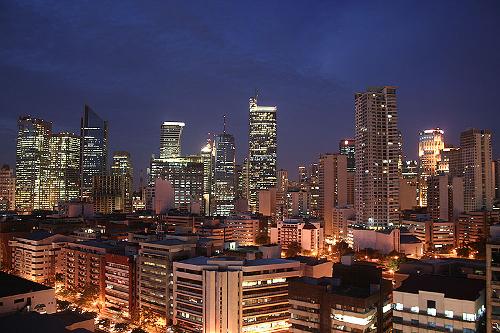 Philippines Manila Business DistrictPhoto: Themanilaxperience CC 3.0 Unported no changes made
Philippines Manila Business DistrictPhoto: Themanilaxperience CC 3.0 Unported no changes made
The Philippines has an economy in which the free market plays an important role, and in which the agricultural sector is still very important. With a GDP of $ 8,400 (2013) per capita, the country is one of the poorer countries in the world.
The Philippine economy has always been very sensitive to crises and the associated high dependence on foreign countries. More and more foreign investors are appearing in the Philippines, on the one hand due to the cheap labor force and on the other due to the lack of restrictions on the policies of multinational corporations.
The total workforce amounts to 42.8 million people. Most of the workforce works the service sector (especially tourism) followed by the agricultural sector and industry. The export of labor to Arab countries, among others, is one of the most important sources of income. The number of Filipinos working abroad, mostly on a contract basis, is in the millions.
The Philippines is a country with a lot of hidden unemployment, especially outside the big cities. Moreover, a large part of the working population does not always have a job. The official unemployment rate was 5.7% in 2017. The informal sector is still very important in the Philippines, especially in the cities. This sector is made up of companies with fewer than five employees and is even included in official statistics. It is estimated that there are twice as many people employed than in the formal sector.
In the period 1999-2003, an average growth of 4 percent was achieved, while growth has been around 7% in recent years (2017). Foreign debt is relatively high. Due to the many natural resources, the Philippines has a varied economic structure. In recent years, the contribution of industry to GDP has been about 30.6%, that of agriculture, fisheries and forestry about 9.6%, and that of the tertiary sector about 59.8%. (2017)
Agriculture, forestry and fishing
The total agricultural sector is still of great importance to the Philippine economy, both for GDP and for employment. It is estimated that around 25% of the labor force still works in the sector. Almost half of the total soil surface consists of cultivated land and an equal part is covered with forest. The total agricultural area is currently about 12 million hectares, of which about half is on the southern island of Mindanao. For this purpose, a large part of the forests on Mindanao was cleared.
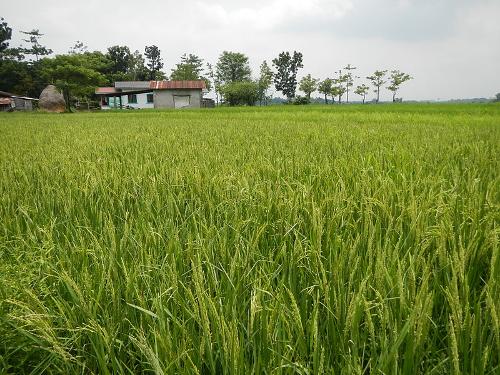 Rice paddy PhilippinesPhoto: Judgefloro CC 4.0 International no changes made
Rice paddy PhilippinesPhoto: Judgefloro CC 4.0 International no changes made
It is not easy for the agricultural sector. Productivity is too low due to, among other things, too small farms, the problem of large land ownership and outdated agricultural methods. For example, the so-called "caingin" or the ladang method is still used.
Important agricultural products are the food crops rice, pineapple, coconuts and corn. Sugar cane, abaca (Manila hemp) and tobacco are also grown. After the introduction of new rice varieties, the Philippines actually became rice exporters and the focus is on both dry and wet rice cultivation, which largely takes place in the central part of Luzon. Filipino farmers often have to make way for huge sugarcane, banana, pineapple and coconut plantations (especially in Mindanao) owned by foreign companies. The related canning industry is also often in the hands of foreigners. Almost a third of the population depends on the coconut harvest. Sugar cane production has declined sharply in recent years due to low world market prices. Pineapples and bananas, mainly grown in Mindanao, are the main export products for the agricultural sector.
More than 10 million pigs and 100 million chickens provide enough chicken and pork for its own population; dairy products and beef are widely imported.
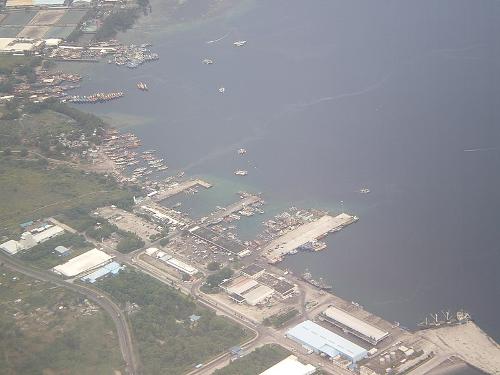 Fishing Port Santos PhilippinesPhoto: Jakemonte80 CC 3.0 Unported no changes made
Fishing Port Santos PhilippinesPhoto: Jakemonte80 CC 3.0 Unported no changes made
The Philippine fishing industry, which employs more than one million people, is becoming increasingly important economically. Nevertheless, there are still a number of problems: the often small companies usually do not have modern cooling and freezing installations and the port facilities could also be much better. Then the danger of overfishing is also real and the coral reef around the Philippine islands will be damaged.
The Philippines was once one of the largest lumber producers in the world. However, the amount of forests has decreased sharply in recent decades, so that the significance for the economy is not that much anymore. Export revenues are now only a few tens of millions of dollars.
Exploitation of natural forests is being slowed down and since 1991 there has been a ban on logging in the jungles. There is now more attention for reforestation, but due to, among other things, the black trade, more forests are still disappearing than are being planted.
Mining and Industry
Mining is becoming increasingly important due to investments, especially by the Americans. The main minerals are copper (more than 75% of the total mining production), gold, nickel, chromium and silver. Cobalt, lead, manganese, zinc, limestone and iron have been found in somewhat smaller quantities, but are still exploitable. Most of the mining products are exported to Japan and the United States.
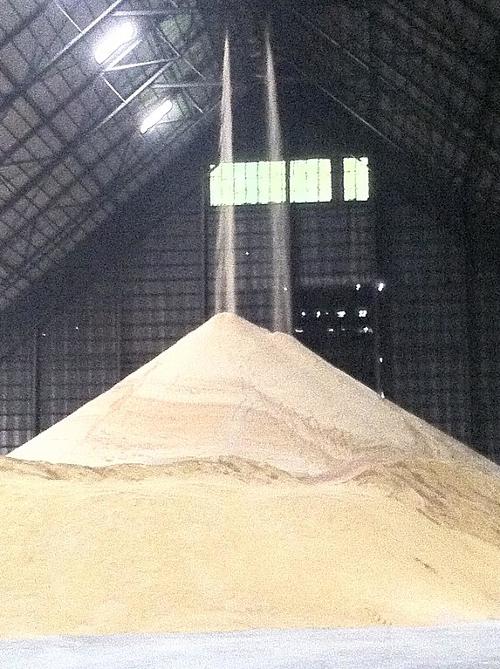 Sugar industry PhilippinesPhoto: Markadan CC 3.0 Unported no changes made
Sugar industry PhilippinesPhoto: Markadan CC 3.0 Unported no changes made
The industry is still of limited importance and can mainly be found around the capital Manila and the surrounding area. The food industry and the manufacture of consumables from imported semi-finished products are particularly important: sugar and tobacco processing factories, rice husks, oil presses, cement and wood industry.
Most companies are wholly or partly owned by foreign companies that pay little or no tax and therefore contribute little to the prosperity of the country.
Trade
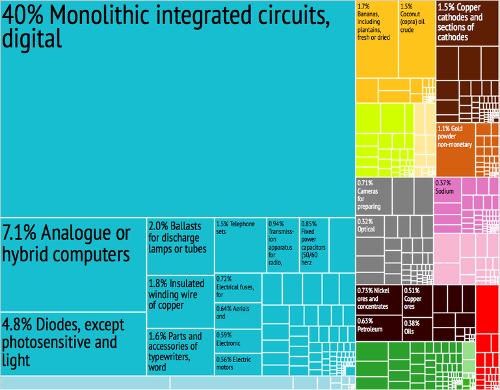 Export PhilippinesPhoto: R. Haussmann, Cesar Hidalgo, et.al CC 3.0 Unported no changes made
Export PhilippinesPhoto: R. Haussmann, Cesar Hidalgo, et.al CC 3.0 Unported no changes made
The trade balance is negative. In recent years, imports have increased again, causing the trade deficit to rise.
More than half of exports consist of electronics products, while exports of primary products such as wood, copra and sugar are becoming less and less important. The Philippines' main export partners were in the United States, Japan, Hong Kong, China and the Netherlands. Exports to the Netherlands mainly concern office and automation equipment and semiconductors. In addition, part of the Philippine exports is transported via the port of Rotterdam to other export destinations.
Imports mainly consist of transport and food, capital goods and oil. The Philippines imports very little from the Netherlands.
Traffic
Rail transport is not much. There is a north-south line on Luzon (San Fernando-Manila-Legaspi) and some lines on Panay and Cebu. Less than 500 km of the 897 km single track is actually used. The Manila metro network carries a lot of passengers.
The road network is closest to Luzon and often of poor quality due to overdue maintenance. For example, only about a fifth of the more than 200,000 km of roads are paved. Due to the many waterways on the islands, almost 12,000 bridges have been included in the road network. Approx. 80% of passenger transport and 60% of freight transport takes place over land.
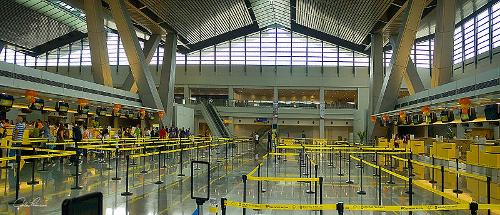 Manila International Arport PhilippinesPhoto: Carabaopower at English Wikipedia Cc3.0 Unported no changes made
Manila International Arport PhilippinesPhoto: Carabaopower at English Wikipedia Cc3.0 Unported no changes made
There are three airlines, of which Philippine Air Lines (PAL) is the largest. Manila International Airport is the main airport, along with the international airports of Cebu and General Santos.
There are a large number of domestic air connections with a rapidly increasing number of passengers.
Sea transport is just as important to the Philippines as road freight transport. Approx. 40% of domestic freight and 10% of passenger transport takes place via water.
In total there are about 1500 ports, the largest six of which account for more than 80% of all port traffic; these are Manila, Cebu, Iloilo, Cayagan de Oro, Zamboanga and Davao.
Sources
Filippijnen
Het Spectrum
Philippines
Lonely Planet
Poppe, D. / Reishandboek Filippijnen
Elmar
Rodell, P.A. / Culture and customs of the Philippines
Greenwood Press
Wee, J. / Philippines
Chelsea House
CIA - World Factbook
BBC - Country Profiles
Copyright: Team The World of Info